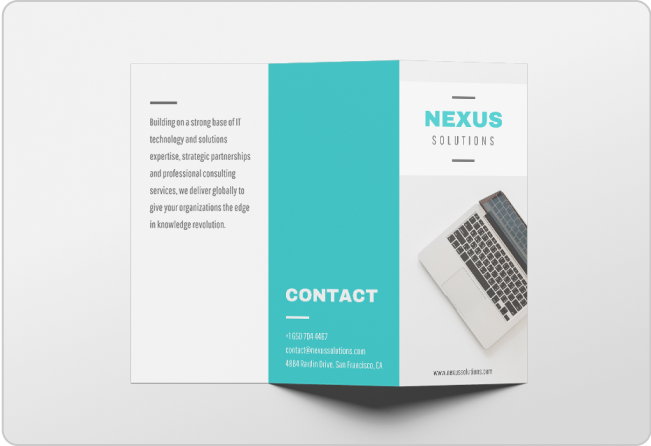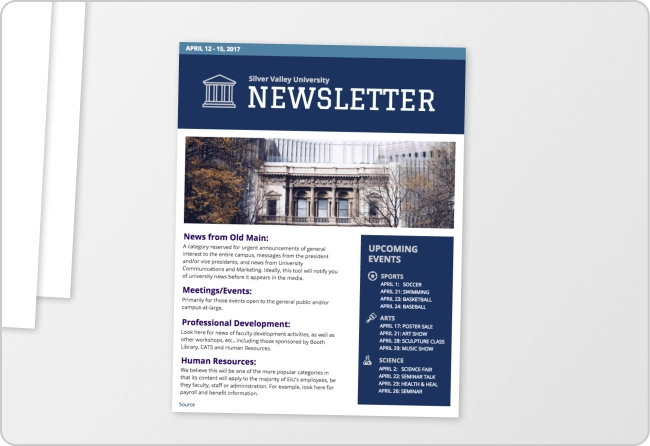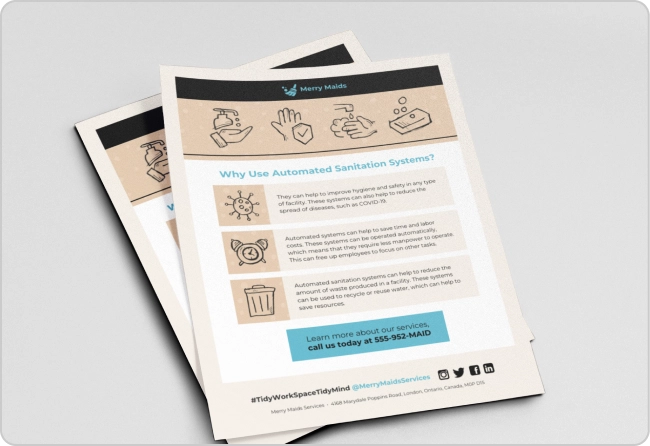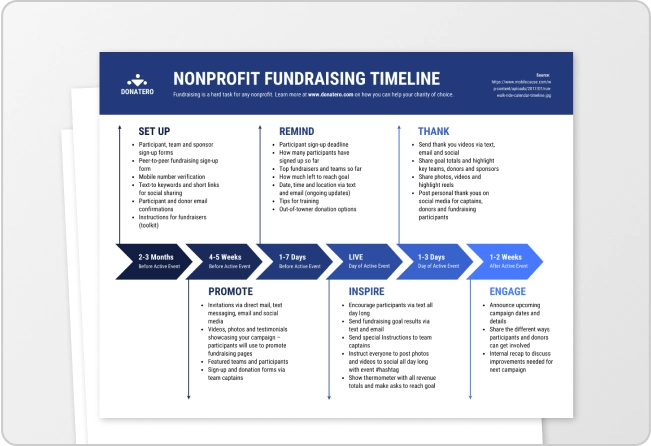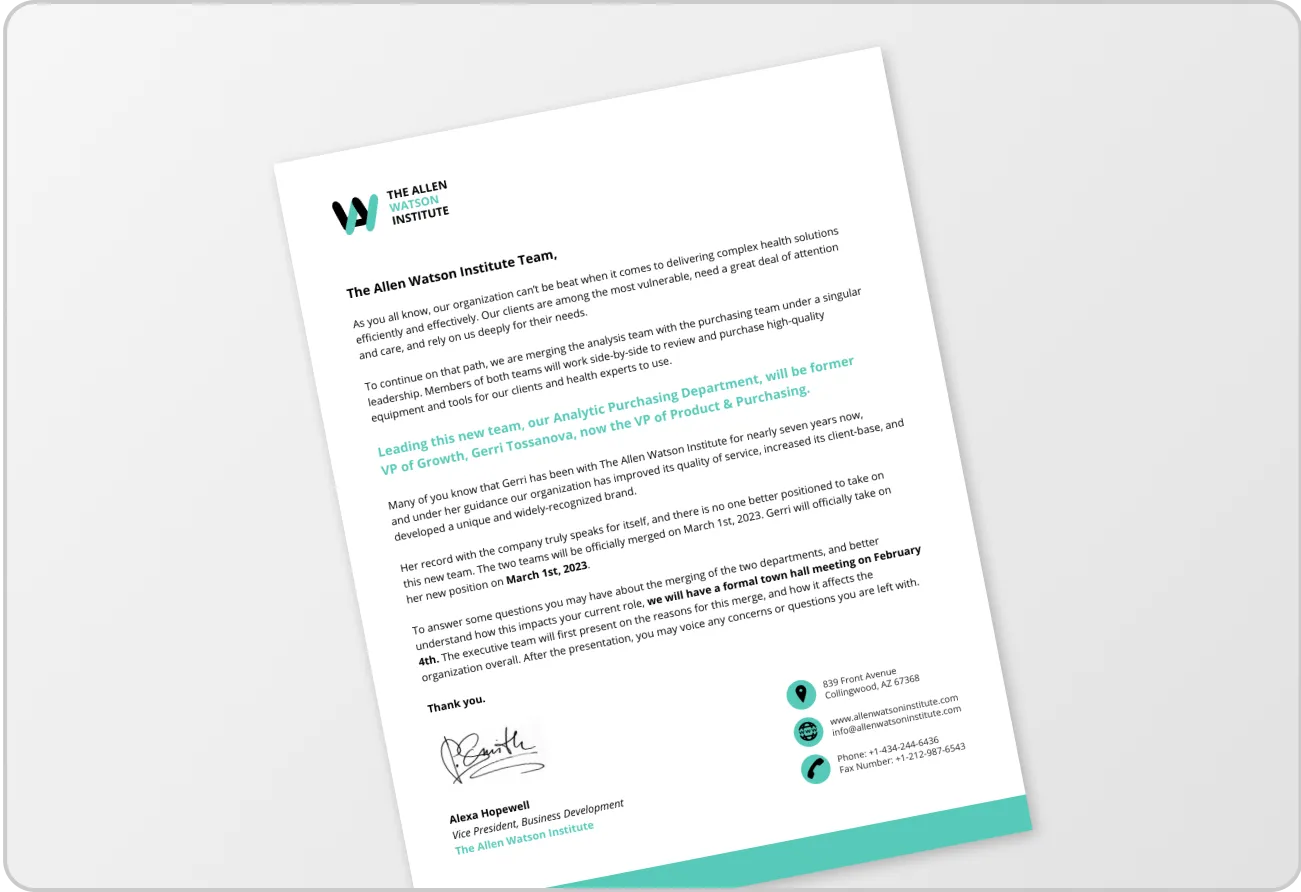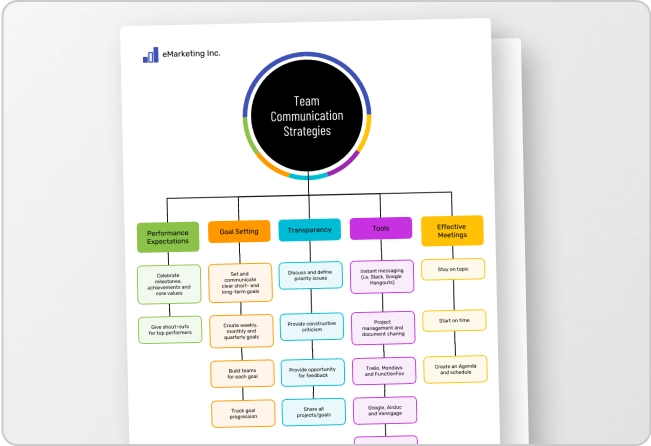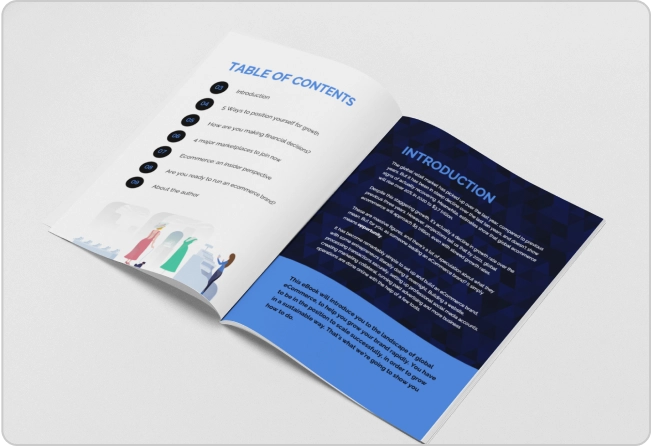
One work practice I swear by is using various tools to ensure clear communication, especially for explaining processes. It reduces misunderstanding and improves efficiency and collaboration.
That’s why I use flowcharts frequently to define processes better. They simplify complex workflows by documenting each step, helping my team stay aligned.
But, I know creating flowcharts can be difficult, especially when designing them from scratch. You need to figure out the right tool for creating flowcharts, pick shapes, connect them and add relevant information.
You can try Microsoft Excel to create flowcharts, using the pre-built process designs. In this blog post, I will show you how to create a flowchart in Excel.
Bonus: I will also tell you how to make engaging flowcharts easily with Venngage’s Online Flowchart Maker by using flowchart templates.
Click to jump ahead
- Step-by-step guide for creating a flowchart in Microsoft Excel
- Method 1: Using SmartArt (recommended for beginners)
- Method 2: Using shapes (more customization)
- How to make a flowchart in Venngage?
- Conclusion: Create engaging flowcharts with Venngage
Step-by-step guide for creating a flowchart in Microsoft Excel
To create a flowchart in Microsoft Excel, you can follow these steps:
- Step 1: Open Excel and create a blank workbook
- Step 2: Set up your workspace and insert SmartArt
- Step 3: Add and edit text
- Step 4: Add or remove shapes
- Step 5: Format the flowchart
- Step 6: Connect shapes (if needed)
- Step 7: Add a title and make final adjustments
- Step 8: Save your flowchart
Let’s dive deeper with a step-by-step explanation to help you create a flowchart easily with Excel.
Method 1: Using SmartArt (recommended for beginners)
If you are creating flowcharts in Excel for the first time, you can use SmartArt to create flowcharts quickly.
Step 1: Open Excel
- Open the Microsoft Excel application on your laptop/desktop.
- Click on File > New.
- Select Blank Workbook to open an Excel sheet and click on Create.

Step 2: Insert SmartArt
Once you have the Excel sheet ready, go to the Insert tab on the left side of the top menu bar.

You’ll see the options to add different shapes, tables, designs and other elements. Click on SmartArt and then open Process designs. There are around 50 flowchart designs for different purposes.

Select a relevant design and click OK. For example, you can pick the first design to explain a simple workflow. For lengthy processes, select designs with multiple shapes.
I have chosen a simple 5-step flowchart design to define the employee onboarding process for the HR team.

Step 3: Add and edit text
Now, click on the graphic and a Text Pane will open on the left side. Replace the default text with the steps you want to add.

Here’s what I have added:

If the Text Pane doesn’t appear automatically, click on the SmartArtDesign tab in the menu. You’ll find the TextPane on the left side in the bottom row.

Step 4: Add or remove shapes
If you want to add or reduce steps from the process, you can add new shapes or delete the existing ones.
1. To add shapes:
- Click on the SmartArt graphic.
- Go to the Design tab.
- Use the Add Shape option to add new shapes.

2. To remove shapes:
- Select the shape you want to remove.
- Press Delete.
You can also add or remove shapes directly from the Text Pane by clicking on the + or ー options.

Step 5: Format the flowchart
Now, let’s customize the flowchart to make it better. Select different shapes and colors from the SmartArt Styles group under the Design tab.

You can also change the color and style of different shapes using the Format Shape pane on the right side.

If you want to change individual shapes, right-click on the shape you want to change and select the Change Shape option.

Step 6: Connect shapes (if needed)
If you are adding additional shapes and want to connect them, here’s what you need to do:
- Select the shape.
- Using Insert > Shapes > Lines to draw connecting arrows.

Step 7: Add a title and make final adjustments
You can finalize the flowchart by adding the title at the top. For a better look, remove the grid lines by:
- Going to Page Layout.
- Unchecking the View option under Gridlines.

Step 8: Save your flowchart
Once your flowchart is ready, follow the below steps to save it:
- Go to File > Save As Template.
- Name your template and ensure the File Format is set to Excel Template.
Read more: 7+ Types of Flowcharts and How to Choose the Right One
Method 2: Using shapes (more customization)
SmartArt offers simple and limited design options for flowcharts. If you want more customization, adding shapes and connecting them manually to create a flowchart will be more suitable. Let’s see how to do it.
Step 1: Open Excel
You need to follow the same process as above.
- Go to File > New.
- Select Blank Workbook to create a new worksheet.
Step 2: Set up your workspace
Before you insert shapes, adjust the column width so that shapes can align better. Select the entire worksheet by clicking the triangle at the top left corner.

Right-click and choose Column Width. Set the width to 2.17.

Step 3: Insert shapes
Now, navigate to the Insert tab and click on Shapes. Scroll down to find Flowchart Shapes.

Select the shapes you need for your flowchart. Here’s what you should keep in mind:
- Oval for start/end points.
- Rectangle for process steps.
- Diamond for decision points.
Step 4: Draw and label shapes
Simply click and drag on the worksheet to draw each shape. Add text to them by double-clicking inside each shape.

Step 5: Connect shapes
Once you have placed the shapes and added the text, add arrows or connectors to explain how the process will work.
Go back to Insert > Shapes and select Arrows from the Lines section. Now, draw arrows to connect your shapes, following the process flow.

Step 6: Format shapes and lines
Use the Shape Format tab to modify the flow chart and make it look more visually appealing. You can adjust colors, change outlines, and apply different styles for better visual clarity.

Step 7: Add a title and make final adjustments
Lastly, give a title to your flowchart by adding text at the top. You can also remove the lines to make the flowchart look simple and clear.
Go to Page Layout and uncheck the View option under Gridlines.

Step 8: Save your work
Follow the same process as explained above in the SmartArt section to save your design. Just click on File near the Home button in Excel and click on Save As.
Check if the title is correct and save your worksheet in .xlsx format.
Read more: How to Make a Flowchart in Microsoft Word in 2024
How to make a flowchart in Venngage?
While Excel offers multiple flowchart designs, the entire process of manually changing shapes, adding colors and fixing layout takes too much time and effort. Also, there are limited design options, leaving little room for creativity.
Instead, you can easily create engaging flowcharts with Venngage’s Online Flowchart Maker. Explore hundreds of flowchart templates for business use and customize them easily.
Apply Brand Kit
Venngage helps you create complex flowcharts within minutes by adding icons, illustrations, text and colors. In fact, you can also customize the flowchart templates as per your brand’s design guidelines. Just click the Brand Kit icon and select the color palette and relevant font style.

Change shapes in one click
To modify any step in the flowchart, select the particular shape and go to the shapes icon on the top left side. Click on the shape you want to add.

Change or add icons
Similarly, if you want to change or add any visual elements to the flowchart, go to the icons option on the left side and search for relevant shapes or visuals.

Add additional steps
You can also define the process flow better by adding additional steps. Click on the shape where you want to add an extra step and select the relevant object.

Drag arrows to connect
You can easily connect shapes by dragging the arrows instead of adding lines manually.

Here’s the final flowchart I created by changing an icon, background color and pattern and adding an additional block.

Here’s how you can create flowcharts in Venngage:
Step 1: Sign up or login on Venngage.
Step 2: Go to the flowcharts template page.
Step 3: Pick a flowchart template as per your requirements.
Step 4: Customize the flowchart using Venngage’s smart flowchart editor.
Step 5: Finalize, save, and download the design.
Conclusion: Create engaging flowcharts with Venngage
While Microsoft Excel works great for creating simple flowcharts, you’ll likely face difficulty creating flowcharts to explain complex workflows. Therefore, creating flowcharts in Excel might defeat the purpose if the steps are not outlined properly.
Intuitive flowchart makers like Venngage can make the process much easier for you. With hundreds of flowchart templates, advanced customization features, and visualization options, you can create engaging flowcharts within minutes!





























